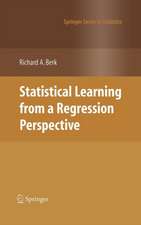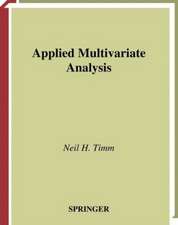Generative Mechanisms Transforming the Social Order: Social Morphogenesis
Editat de Margaret S. Archeren Limba Engleză Hardback – 20 mar 2015
| Toate formatele și edițiile | Preț | Express |
|---|---|---|
| Paperback (1) | 386.00 lei 43-57 zile | |
| Springer International Publishing – 6 oct 2016 | 386.00 lei 43-57 zile | |
| Hardback (1) | 379.65 lei 17-23 zile | +35.67 lei 5-11 zile |
| Springer International Publishing – 20 mar 2015 | 379.65 lei 17-23 zile | +35.67 lei 5-11 zile |
Preț: 379.65 lei
Nou
Puncte Express: 569
Preț estimativ în valută:
72.67€ • 78.96$ • 61.08£
72.67€ • 78.96$ • 61.08£
Carte disponibilă
Livrare economică 26 martie-01 aprilie
Livrare express 14-20 martie pentru 45.66 lei
Preluare comenzi: 021 569.72.76
Specificații
ISBN-13: 9783319137728
ISBN-10: 3319137727
Pagini: 200
Ilustrații: VIII, 248 p. 14 illus., 4 illus. in color.
Dimensiuni: 155 x 235 x 20 mm
Greutate: 0.55 kg
Ediția:2015
Editura: Springer International Publishing
Colecția Springer
Seria Social Morphogenesis
Locul publicării:Cham, Switzerland
ISBN-10: 3319137727
Pagini: 200
Ilustrații: VIII, 248 p. 14 illus., 4 illus. in color.
Dimensiuni: 155 x 235 x 20 mm
Greutate: 0.55 kg
Ediția:2015
Editura: Springer International Publishing
Colecția Springer
Seria Social Morphogenesis
Locul publicării:Cham, Switzerland
Public țintă
ResearchCuprins
Foreword.- Chapter 1. Introduction: Other Conceptions of Generative Mechanisms and Ours; Margaret S. Archer.- Part I. Conceptualising Mechanisms.- Chapter 2. Causal Mechanisms: Lessons from the Life Sciences; Philip Gorski.- Chapter 3. Mechanisms and Models; Some Examples from International Relations; Colin Wright.- Chapter 4. Social Mechanisms and Their Feedbacks; Pierpaolo Donati.- Part II. Venturing Morphogenetic Mechanisms.- Chapter 5. ''Mechanisms'' of the Build-Up of Information Society; Wolfgang Hofkirchner.- Chapter 6. Body Captors and Network Profiles: A Neo-Structural Note on Digitalized Social Control and Morphogenesis; Emmanuel Lazega.- Chapter 7. How Agency is Transformed in the Course of Social Transformation: Don't Forget the Double Morphogenesis; Margaret S. Archer.- Chapter 8. Turbulence and Relational Conjunctures: The Emergence of Morphogenic Environments; Andrea Maccarini.- Part III. Mechanisms and Morphostasis: Power of Life and Death.- Chapter 9. Why Don't Things Change? The Matter of Morphostasis; Douglas V. Porpora.- Chapter 10. The Modern Corporation: The Site of a Mechanism (of Global Social Change) that is Out-of-Control; Tony Lawson.- Chapter 11. Death Contested: Morphonecrosis and Conflicts of Interpretation; Ismael Al-Amoudi and John Latsis.
Notă biografică
Margaret Archer heads the project at EPFL 'From Modernity to Morphogenesis'. She was elected as the first woman President of the International Sociological Association at the 12th World Congress of Sociology. She is a founder member of both the Pontifical Academy of Social Sciences and the Academy of Learned Societies in the Social Sciences and is a trustee of the Centre for Critical Realism. She studied at the University of London, graduating B.Sc. in 1964 and Ph.D. in 1967 with a thesis on The Educational Aspirations of English Working Class Parents. She was a lecturer at the University of Reading from 1966 to 1973. She is one of the most influential theorists in the critical realist tradition. At the 12th World Congress of Sociology, she was elected as the first woman President of the International Sociological Association, is a founder member of both the Pontifical Academy of Social Sciences and the Academy of Learned Societies in the Social Sciences. She is a Trustee of the Centre for Critical Realism.
Textul de pe ultima copertă
This volume examines how generative mechanisms emerge in the social order and their consequences. It does so in the light of finding answers to the general question posed in this book series: Will Late Modernity be replaced by a social formation that could be called Morphogenic Society? This volume clarifies what a ‘generative mechanism’ is, to achieve a better understanding of their social origins, and to delineate in what way such mechanisms exert effects within a current social formation, either stabilizing it or leading to changes potentially replacing it . The book explores questions about conjuncture, convergence and countervailing effects of morphogenetic mechanisms in order to assess their impact. Simultaneously, it looks at how products of positive feedback intertwine with the results of (morphostatic) negative feedback. This process also requires clarification, especially about the conditions under which morphostasis prevails over morphogenesis and vice versa. It raises the issue as to whether their co-existence can be other than short-lived. The volume addresses whether or not there also is a process of ‘morpho-necrosis’, i.e. the ultimate demise of certain morphostatic mechanisms, such that they cannot ‘recover’. The book concludes that not only are generative mechanisms required to explain associations between variables involved in the replacement of Late Modernity by Morphogenic Society, but they are also robust enough to account for cases and times when such variables show no significant correlations.
Caracteristici
Examines how generative mechanisms emerge in the social order Clarifies what a generative mechanism is to achieve better understanding of their social origins Addresses whether or not there also is a process of ‘morpho-necrosis’
















